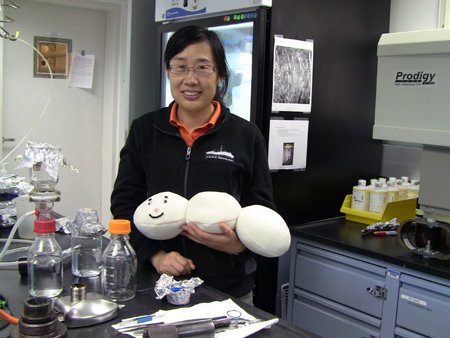
The JR and the Microbiologists Aboard
Good day! We are currently finishing up our coring at the last location. One of the main reasons why we are out in the South Pacific is to learn about the tiny living things called microbes. A very powerful microscope is needed to see organisms this tiny. Today, I want to tell you just a little about what the microbiologists have been doing and what they still need to do. A biologist is someone who studies living things and a microbiologist is someone who studies extremely small living things.
The South Pacific was chosen for study because the microbes that live on the seafloor and within the sediments do not get any sunlight at all. The microbiologists want to know how the microbes are getting their energy and they want to also know if living conditions are different as you go from near the continents to way out in the center far from any land. Some of the scientists are culturing the microbes on petri dishes. A petri dish is a plastic container that has a layer of food (gel) on the bottom. A small sample of sediments or seawater is smeared across the gel and the petri dish is placed in a warm oven or incubator. If there are microbes in the sample, they will multiply and form a large colony (looks like a spot on the gel) after a few days. These are then counted by the microbiologist. (See photos)
Other scientists are going to take their samples back to their labs on land and try to can DNA from the microbes. This is how they are identified. Someone else is interested in what the role (or function) of parts of the RNA is in the microbes.
Some of the other micbiologists want to know how many microbes are living at the top of the sediments (at the seafloor) and how many are living deeper. They attach a colored dye to the microbes and then using special equipment, they can count the microbes because the dye glows in the dark. A microscope, placed in a dark room, is also used to count. It offers a second method of counting.
I have put many photos of the microbiologists here for you. They come from many countries and are all working together here on the JOIDES Resolution.
.jpg)
.jpg)
.jpg)
.jpg)
.jpg)
.jpg)
.jpg)
